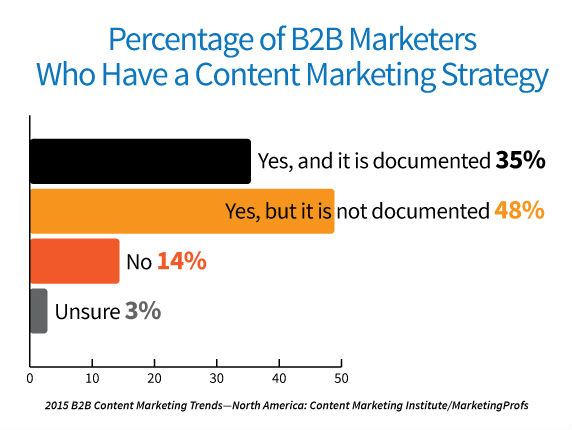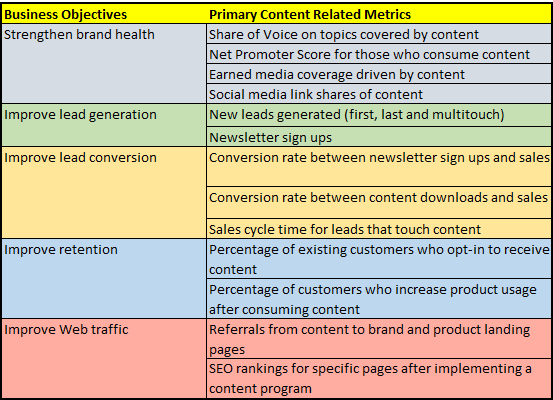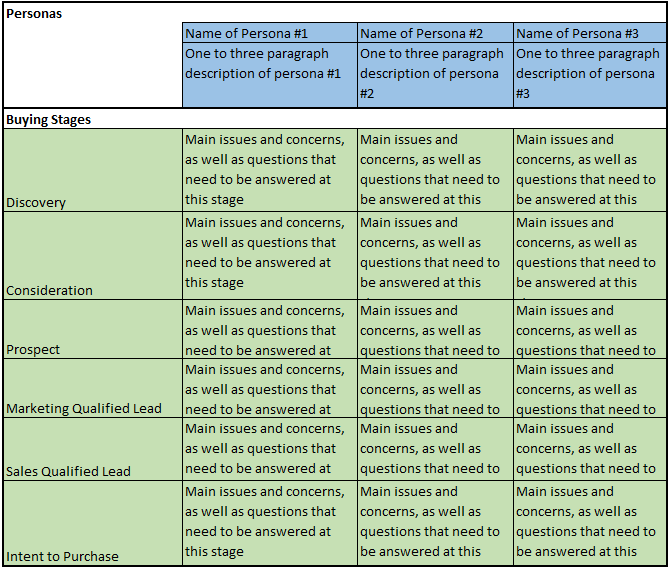A Fill-In-The Blank Content Strategy Document
After noting a lack of standardized content strategy documents, columnist Jonathan Blank has created his own. Feel free to use and modify to suit your own business!

Over the last six months, I’ve seen no less than ten different structures for content strategy documents — and that’s just from talking to peers at other brands. For those who are at agencies or consultancies, I assume that number might be double or triple in working with their clients.
Since only 35 percent of B2B brands have a documented content strategy, according to research by the Content Marketing Institute, I think content marketing leaders are struggling to understand the best way to document their strategies and keep their organizations on the same page.

Based on the content strategy documents I’ve seen over the last few months, I developed a “fill-in-the-blank” version below that brings together what I took away as common elements among those documents.
You will obviously want to adapt the structure to align with your organization’s needs and your view of what elements of the strategy need to be highlighted. However, I am hopeful you will find this to be a helpful starting point.
Map Of Alignment Between Business Goals & Content Measurement
Content marketing is a critical element in our overall marketing mix. With that said, we have focused our content marketing efforts on a couple of our mission critical business objectives.
We focus our content efforts to ensure that we are driving business value and not getting caught up in chasing pageviews, social followers and ad impressions as an end game in and of themselves. The first business goal we are supporting with content marketing is (insert business goal). As noted in the company’s business plan, we are aiming to (insert business metric). We will measure the content marketing support of this goal by aiming to (insert content metrics).
Repeat this paragraph for each business objective you are going to support. I recommend you stick to three business objectives and scale from there.
Let’s now fill in the blanks. Here’s a list of options to consider for filling them in.

The Value Of Content To Our Customers
Through our content marketing programs, we will answer the primary questions our target audiences ask at each stage of the buying cycle. We will align each program, and piece of content, to a persona. The following guide will be used by our content creators and distributors in program development and content ideation.

We will answer these questions broadly through a commitment to (insert a vision statement for content marketing overall or a series of vision statements for each of your content hubs).
Here are some examples of content vision statements from peers I’ve spoken with:
- We provide recruiters with the most actionable education on incorporating new media into their hiring strategies.
- We imbue expecting mothers with confidence through easy access to experts on pregnancy challenges.
- We enable CIOs to understand what computing trends are most important for their specific industries and how to apply them in the context of industry trends.
We will deliver on this mission through (insert statements about who you will tap into for subject matter expertise and how their expertise will be showcased in a unique way).
In this section you will want to address the relative focus areas for the following content contributors and how you will incentivize them to create content:
- Brand employees
- Influencers
- Customers
- Third-party publishers who will license content
Bringing The Content Strategy To Life
In this section, you are going to want to write out the answers to the following questions:
- Which content programs align with which business objectives?
- Who is the Managing Editor for each program? (A Managing Editor may oversee more than one program.)
- How will you receive and evaluate ideas for content for each program?
- How often will you publish new content for each program? How often will you update existing content?
- Who will be responsible for copy editing tasks? How long will it take them to perform those tasks?
- Who will be responsible for graphic design tasks? How long will it take them to perform those tasks?
- Who will evaluate the effectiveness of each piece of content and for the program overall?
In addition to answering these questions, you are going to want to define the parameters for a content calendar for your programs. While an executive may not need to know what your calendar looks like, it is important to create a standard for your company’s content calendar or calendars and showcase what must be defined before going through the creation workflows. Here’s an example calendar.
If you develop a content strategy document with these three sections, you should have your brand on the same page about how to drive business results through consistently providing your audience with value-driven content (as opposed to pure advertising messages). A lot of work has to go into filling in these blanks, but I do hope you have a template now for a step by step process for documenting your strategy.Contributing authors are invited to create content for MarTech and are chosen for their expertise and contribution to the search community. Our contributors work under the oversight of the editorial staff and contributions are checked for quality and relevance to our readers. MarTech is owned by Semrush. Contributor was not asked to make any direct or indirect mentions of Semrush. The opinions they express are their own.
Related stories
New on MarTech
